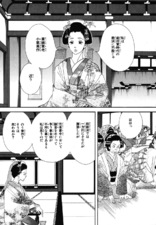
Originally, Natsume outlined these shōjo manga characteristics in his seminal contribution to the co-authored Manga no yomikata ( How to Read Manga) (Takarajimasha, 1995), and he further discussed ma and mahaku in his near-final chapter of Manga wa naze omoshiroi no ka: sono hyōgen to bunpō ( Why Is Manga So Interesting?: Its Expression and Grammar) (NHK Library, 1997), which is now available in English via our translation of “Panel Configurations in Shōjo Manga” in U.S.-Japan Women’s Journal Vol. For Yoshinaga, such techniques are crucial for the type of humor and pathos she produces in her otherwise restrained stories. Natsume here discusses the kind of panel “beats” ( ma) and “white break space” ( mahaku) which he sees as being two important components of panel configurations in shōjo manga. In his “manga columns” ( manga koramu) from 2005, Natsume Fusasnosuke returns to his trademark formal analysis of the shōjo manga style, applying it to Yoshinaga Fumi, author of award-winning manga such as Ōoku: The Inner Chambers (2004-2020).

(Aug.Features Yoshinaga Fumi: Those Gallant Girls’ Comics of Hers Yoshinaga’s work is wry and stately by turns, doing full justice to the book’s rich tapestry of stories. ’s art has a spare, elegant aesthetic that shines with carefully chosen detail. Not as visually busy as many historical works, Ooku , which has been made into both a Japanese television series and a smash hit Korean movie. Yoshinaga is the acclaimed creator of Antique Bakery

It begins tightly focused on a single heroic character and slowly pans out from there, embracing first the court intrigue of the Ooku, then the new Shogun and Japan as a whole and finally the outside world, unaware and free of the plague. One of the few serious works of alternate history in contemporary manga, OokuĮxplores the relationship between gender and culture in subtle and unexpected ways. The Ooku was an area of Edo Castle reserved for the shogun’s concubines and female relatives here the shogun is a woman and the Ooku is entirely male. A mysterious plague has killed three out of four boys for generations, so men are carefully guarded and sheltered, while women go about the business of daily life. The Edo period of an alternate Japan is ruled entirely by women in this manga.


 0 kommentar(er)
0 kommentar(er)
